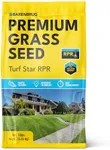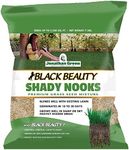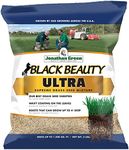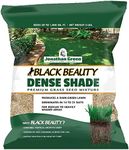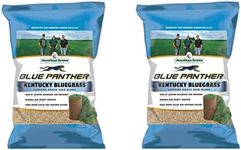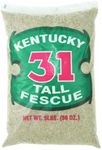Buying Guide for the Best Grass Seeds
Choosing the right grass seed is essential for creating a healthy, attractive lawn that suits your climate, soil, and how you plan to use your yard. The best approach is to consider your local environment, how much sunlight your lawn gets, and how much foot traffic it will endure. Understanding the key characteristics of grass seed varieties will help you make a choice that leads to a lush, resilient lawn.Grass TypeGrass type refers to the species or blend of grasses in the seed mix. This is important because different types thrive in different climates and conditions. Cool-season grasses do well in regions with cold winters and moderate summers, while warm-season grasses are better for hot, southern climates. Some mixes are designed for sun, others for shade, and some are blends for general use. To pick the right one, consider your local climate and the amount of sun or shade your lawn receives.
Sunlight RequirementsSunlight requirements indicate how much direct sunlight the grass needs to grow well. Some grasses need full sun, while others tolerate or even prefer shade. This is important because planting a sun-loving grass in a shady area will result in poor growth. Check how many hours of sunlight your lawn gets each day and choose a seed that matches those conditions—full sun, partial shade, or dense shade.
Drought ToleranceDrought tolerance describes how well the grass can survive with limited water. This is crucial if you live in an area with water restrictions or dry summers. Grasses with high drought tolerance need less frequent watering and stay green longer during dry spells. If you want a low-maintenance lawn or live in a dry region, look for seeds labeled as drought-tolerant.
Traffic ToleranceTraffic tolerance refers to how well the grass can handle being walked or played on. Some grasses recover quickly from wear, making them ideal for families, pets, or sports. Others are more delicate and best for ornamental lawns. Think about how you use your lawn—if it’s a play area, choose a high-traffic variety; for decorative purposes, a lower-traffic type may be fine.
Germination SpeedGermination speed is how quickly the seeds sprout and start to grow. Fast-germinating seeds can give you a green lawn sooner, which is helpful if you want quick results or need to repair bare spots. However, slower-growing types may develop deeper roots and be more durable in the long run. Decide if you need quick coverage or are willing to wait for a more robust lawn.
Disease ResistanceDisease resistance means how well the grass can withstand common lawn diseases. This is important because some areas are prone to fungal or pest problems, which can ruin a lawn. If you’ve had issues with lawn diseases before or live in a humid area, look for seeds that mention disease resistance to reduce the need for chemical treatments.
Seed Purity and CoatingSeed purity refers to the percentage of actual grass seed versus filler or weed seeds in the package. Higher purity means you get more of what you want and fewer weeds. Some seeds are coated with nutrients or treatments to help them germinate and resist disease. If you want the best results, look for high-purity seeds and consider coated seeds if you want extra help with establishment.

